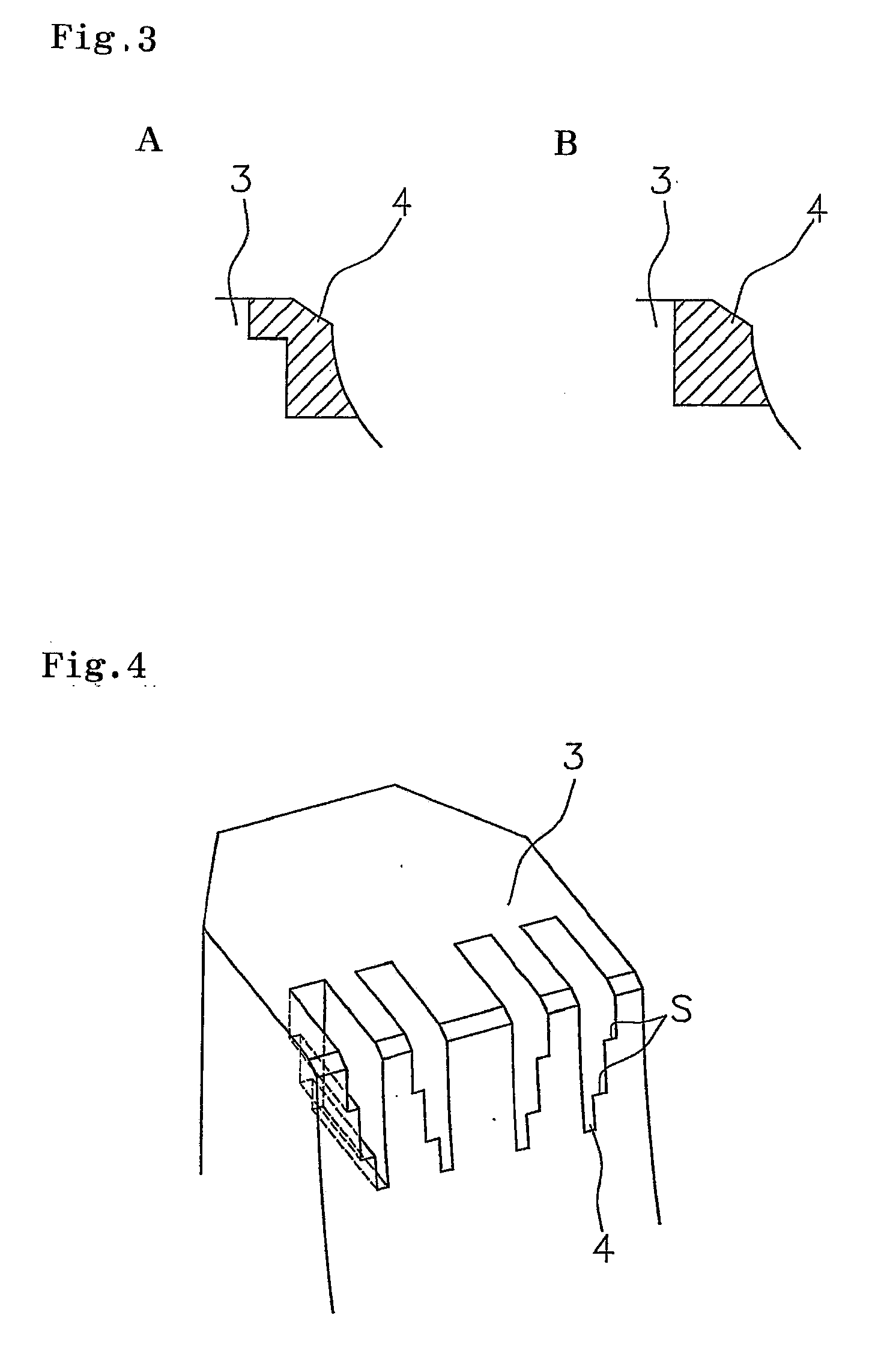Pneumatic tire
a technology of pneumatic tires and tires, applied in the field of pneumatic tires, can solve the problems of achieve the effects of preventing heel and toe wear, reducing stiffness, and reducing stiffness
- Summary
- Abstract
- Description
- Claims
- Application Information
AI Technical Summary
Benefits of technology
Problems solved by technology
Method used
Image
Examples
example 1
[0045]A pneumatic tire including a shoulder block shown in FIG. 1 was prepared (one-side closed sipes 4 shown in FIG. 2 End FIG. 3A were formed and the following settings were made: L=5 mm, H=20 mm, W=1 mm, H1=10 mm, W1=0.5 mm). Table 1 shows the result of the above evaluation made by using such a pneumatic tire.
example 2
[0046]A following pneumatic tire was prepared. That is, a pneumatic tire which had the same structure as that in Example 1 excepting a point that, in the pneumatic tire including shoulder block shown in FIG. 1, the direction of the Sipe wall surface with the step portion S was changed as shown in FIG. 7A. Table 1 shows the result of the above evaluation made by using such a pneumatic tire.
example 3
[0047]A following pneumatic tire was prepared. That is, a pneumatic tire which had the same structure as that in Example 1 excepting a point that, in the pneumatic tire including shoulder block shown in FIG. 1, one-side closed sipes 4 which had two step portions S as shown in FIG. 7B employed. Table 1 shows the result of the above evaluation made by using such a pneumatic tire.
PUM
 Login to View More
Login to View More Abstract
Description
Claims
Application Information
 Login to View More
Login to View More - R&D
- Intellectual Property
- Life Sciences
- Materials
- Tech Scout
- Unparalleled Data Quality
- Higher Quality Content
- 60% Fewer Hallucinations
Browse by: Latest US Patents, China's latest patents, Technical Efficacy Thesaurus, Application Domain, Technology Topic, Popular Technical Reports.
© 2025 PatSnap. All rights reserved.Legal|Privacy policy|Modern Slavery Act Transparency Statement|Sitemap|About US| Contact US: help@patsnap.com



